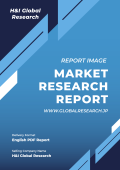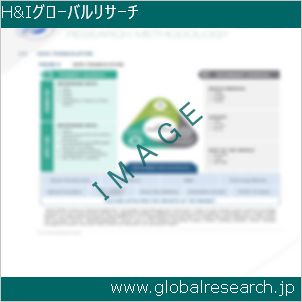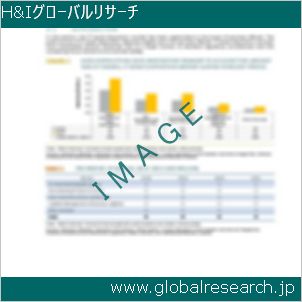1 Study Coverage
1.1 Nanocomposite Solar Cell Product Introduction
1.2 Market by Type
1.2.1 Global Nanocomposite Solar Cell Market Size by Type, 2017 VS 2021 VS 2028
1.2.2 Organic Nanocomposites
1.2.3 Inorganic Nanocomposites
1.3 Market by Application
1.3.1 Global Nanocomposite Solar Cell Market Size by Application, 2017 VS 2021 VS 2028
1.3.2 BIPV (Building Integrated Photovoltaics)
1.3.3 VIPV (Vehicle Integrated PV)
1.3.4 FIPV (Fabric Integrated PV)
1.3.5 Others
1.4 Study Objectives
1.5 Years Considered
2 Global Nanocomposite Solar Cell Production
2.1 Global Nanocomposite Solar Cell Production Capacity (2017-2028)
2.2 Global Nanocomposite Solar Cell Production by Region: 2017 VS 2021 VS 2028
2.3 Global Nanocomposite Solar Cell Production by Region
2.3.1 Global Nanocomposite Solar Cell Historic Production by Region (2017-2022)
2.3.2 Global Nanocomposite Solar Cell Forecasted Production by Region (2023-2028)
2.4 North America
2.5 Europe
2.6 China
2.7 Japan
3 Global Nanocomposite Solar Cell Sales in Volume & Value Estimates and Forecasts
3.1 Global Nanocomposite Solar Cell Sales Estimates and Forecasts 2017-2028
3.2 Global Nanocomposite Solar Cell Revenue Estimates and Forecasts 2017-2028
3.3 Global Nanocomposite Solar Cell Revenue by Region: 2017 VS 2021 VS 2028
3.4 Global Nanocomposite Solar Cell Sales by Region
3.4.1 Global Nanocomposite Solar Cell Sales by Region (2017-2022)
3.4.2 Global Sales Nanocomposite Solar Cell by Region (2023-2028)
3.5 Global Nanocomposite Solar Cell Revenue by Region
3.5.1 Global Nanocomposite Solar Cell Revenue by Region (2017-2022)
3.5.2 Global Nanocomposite Solar Cell Revenue by Region (2023-2028)
3.6 North America
3.7 Europe
3.8 Asia-Pacific
3.9 Latin America
3.10 Middle East & Africa
4 Competition by Manufactures
4.1 Global Nanocomposite Solar Cell Production Capacity by Manufacturers
4.2 Global Nanocomposite Solar Cell Sales by Manufacturers
4.2.1 Global Nanocomposite Solar Cell Sales by Manufacturers (2017-2022)
4.2.2 Global Nanocomposite Solar Cell Sales Market Share by Manufacturers (2017-2022)
4.2.3 Global Top 10 and Top 5 Largest Manufacturers of Nanocomposite Solar Cell in 2021
4.3 Global Nanocomposite Solar Cell Revenue by Manufacturers
4.3.1 Global Nanocomposite Solar Cell Revenue by Manufacturers (2017-2022)
4.3.2 Global Nanocomposite Solar Cell Revenue Market Share by Manufacturers (2017-2022)
4.3.3 Global Top 10 and Top 5 Companies by Nanocomposite Solar Cell Revenue in 2021
4.4 Global Nanocomposite Solar Cell Sales Price by Manufacturers
4.5 Analysis of Competitive Landscape
4.5.1 Manufacturers Market Concentration Ratio (CR5 and HHI)
4.5.2 Global Nanocomposite Solar Cell Market Share by Company Type (Tier 1, Tier 2, and Tier 3)
4.5.3 Global Nanocomposite Solar Cell Manufacturers Geographical Distribution
4.6 Mergers & Acquisitions, Expansion Plans
5 Market Size by Type
5.1 Global Nanocomposite Solar Cell Sales by Type
5.1.1 Global Nanocomposite Solar Cell Historical Sales by Type (2017-2022)
5.1.2 Global Nanocomposite Solar Cell Forecasted Sales by Type (2023-2028)
5.1.3 Global Nanocomposite Solar Cell Sales Market Share by Type (2017-2028)
5.2 Global Nanocomposite Solar Cell Revenue by Type
5.2.1 Global Nanocomposite Solar Cell Historical Revenue by Type (2017-2022)
5.2.2 Global Nanocomposite Solar Cell Forecasted Revenue by Type (2023-2028)
5.2.3 Global Nanocomposite Solar Cell Revenue Market Share by Type (2017-2028)
5.3 Global Nanocomposite Solar Cell Price by Type
5.3.1 Global Nanocomposite Solar Cell Price by Type (2017-2022)
5.3.2 Global Nanocomposite Solar Cell Price Forecast by Type (2023-2028)
6 Market Size by Application
6.1 Global Nanocomposite Solar Cell Sales by Application
6.1.1 Global Nanocomposite Solar Cell Historical Sales by Application (2017-2022)
6.1.2 Global Nanocomposite Solar Cell Forecasted Sales by Application (2023-2028)
6.1.3 Global Nanocomposite Solar Cell Sales Market Share by Application (2017-2028)
6.2 Global Nanocomposite Solar Cell Revenue by Application
6.2.1 Global Nanocomposite Solar Cell Historical Revenue by Application (2017-2022)
6.2.2 Global Nanocomposite Solar Cell Forecasted Revenue by Application (2023-2028)
6.2.3 Global Nanocomposite Solar Cell Revenue Market Share by Application (2017-2028)
6.3 Global Nanocomposite Solar Cell Price by Application
6.3.1 Global Nanocomposite Solar Cell Price by Application (2017-2022)
6.3.2 Global Nanocomposite Solar Cell Price Forecast by Application (2023-2028)
7 North America
7.1 North America Nanocomposite Solar Cell Market Size by Type
7.1.1 North America Nanocomposite Solar Cell Sales by Type (2017-2028)
7.1.2 North America Nanocomposite Solar Cell Revenue by Type (2017-2028)
7.2 North America Nanocomposite Solar Cell Market Size by Application
7.2.1 North America Nanocomposite Solar Cell Sales by Application (2017-2028)
7.2.2 North America Nanocomposite Solar Cell Revenue by Application (2017-2028)
7.3 North America Nanocomposite Solar Cell Sales by Country
7.3.1 North America Nanocomposite Solar Cell Sales by Country (2017-2028)
7.3.2 North America Nanocomposite Solar Cell Revenue by Country (2017-2028)
7.3.3 United States
7.3.4 Canada
8 Europe
8.1 Europe Nanocomposite Solar Cell Market Size by Type
8.1.1 Europe Nanocomposite Solar Cell Sales by Type (2017-2028)
8.1.2 Europe Nanocomposite Solar Cell Revenue by Type (2017-2028)
8.2 Europe Nanocomposite Solar Cell Market Size by Application
8.2.1 Europe Nanocomposite Solar Cell Sales by Application (2017-2028)
8.2.2 Europe Nanocomposite Solar Cell Revenue by Application (2017-2028)
8.3 Europe Nanocomposite Solar Cell Sales by Country
8.3.1 Europe Nanocomposite Solar Cell Sales by Country (2017-2028)
8.3.2 Europe Nanocomposite Solar Cell Revenue by Country (2017-2028)
8.3.3 Germany
8.3.4 France
8.3.5 U.K.
8.3.6 Italy
8.3.7 Russia
9 Asia Pacific
9.1 Asia Pacific Nanocomposite Solar Cell Market Size by Type
9.1.1 Asia Pacific Nanocomposite Solar Cell Sales by Type (2017-2028)
9.1.2 Asia Pacific Nanocomposite Solar Cell Revenue by Type (2017-2028)
9.2 Asia Pacific Nanocomposite Solar Cell Market Size by Application
9.2.1 Asia Pacific Nanocomposite Solar Cell Sales by Application (2017-2028)
9.2.2 Asia Pacific Nanocomposite Solar Cell Revenue by Application (2017-2028)
9.3 Asia Pacific Nanocomposite Solar Cell Sales by Region
9.3.1 Asia Pacific Nanocomposite Solar Cell Sales by Region (2017-2028)
9.3.2 Asia Pacific Nanocomposite Solar Cell Revenue by Region (2017-2028)
9.3.3 China
9.3.4 Japan
9.3.5 South Korea
9.3.6 India
9.3.7 Australia
9.3.8 China Taiwan
9.3.9 Indonesia
9.3.10 Thailand
9.3.11 Malaysia
10 Latin America
10.1 Latin America Nanocomposite Solar Cell Market Size by Type
10.1.1 Latin America Nanocomposite Solar Cell Sales by Type (2017-2028)
10.1.2 Latin America Nanocomposite Solar Cell Revenue by Type (2017-2028)
10.2 Latin America Nanocomposite Solar Cell Market Size by Application
10.2.1 Latin America Nanocomposite Solar Cell Sales by Application (2017-2028)
10.2.2 Latin America Nanocomposite Solar Cell Revenue by Application (2017-2028)
10.3 Latin America Nanocomposite Solar Cell Sales by Country
10.3.1 Latin America Nanocomposite Solar Cell Sales by Country (2017-2028)
10.3.2 Latin America Nanocomposite Solar Cell Revenue by Country (2017-2028)
10.3.3 Mexico
10.3.4 Brazil
10.3.5 Argentina
11 Middle East and Africa
11.1 Middle East and Africa Nanocomposite Solar Cell Market Size by Type
11.1.1 Middle East and Africa Nanocomposite Solar Cell Sales by Type (2017-2028)
11.1.2 Middle East and Africa Nanocomposite Solar Cell Revenue by Type (2017-2028)
11.2 Middle East and Africa Nanocomposite Solar Cell Market Size by Application
11.2.1 Middle East and Africa Nanocomposite Solar Cell Sales by Application (2017-2028)
11.2.2 Middle East and Africa Nanocomposite Solar Cell Revenue by Application (2017-2028)
11.3 Middle East and Africa Nanocomposite Solar Cell Sales by Country
11.3.1 Middle East and Africa Nanocomposite Solar Cell Sales by Country (2017-2028)
11.3.2 Middle East and Africa Nanocomposite Solar Cell Revenue by Country (2017-2028)
11.3.3 Turkey
11.3.4 Saudi Arabia
11.3.5 UAE
12 Corporate Profiles
12.1 Bloo Solar
12.1.1 Bloo Solar Corporation Information
12.1.2 Bloo Solar Overview
12.1.3 Bloo Solar Nanocomposite Solar Cell Sales, Price, Revenue and Gross Margin (2017-2022)
12.1.4 Bloo Solar Nanocomposite Solar Cell Product Model Numbers, Pictures, Descriptions and Specifications
12.1.5 Bloo Solar Recent Developments
12.2 EnSol
12.2.1 EnSol Corporation Information
12.2.2 EnSol Overview
12.2.3 EnSol Nanocomposite Solar Cell Sales, Price, Revenue and Gross Margin (2017-2022)
12.2.4 EnSol Nanocomposite Solar Cell Product Model Numbers, Pictures, Descriptions and Specifications
12.2.5 EnSol Recent Developments
12.3 Innovalight
12.3.1 Innovalight Corporation Information
12.3.2 Innovalight Overview
12.3.3 Innovalight Nanocomposite Solar Cell Sales, Price, Revenue and Gross Margin (2017-2022)
12.3.4 Innovalight Nanocomposite Solar Cell Product Model Numbers, Pictures, Descriptions and Specifications
12.3.5 Innovalight Recent Developments
12.4 Konarka
12.4.1 Konarka Corporation Information
12.4.2 Konarka Overview
12.4.3 Konarka Nanocomposite Solar Cell Sales, Price, Revenue and Gross Margin (2017-2022)
12.4.4 Konarka Nanocomposite Solar Cell Product Model Numbers, Pictures, Descriptions and Specifications
12.4.5 Konarka Recent Developments
12.5 Nanosolar
12.5.1 Nanosolar Corporation Information
12.5.2 Nanosolar Overview
12.5.3 Nanosolar Nanocomposite Solar Cell Sales, Price, Revenue and Gross Margin (2017-2022)
12.5.4 Nanosolar Nanocomposite Solar Cell Product Model Numbers, Pictures, Descriptions and Specifications
12.5.5 Nanosolar Recent Developments
12.6 Solarmer Energy
12.6.1 Solarmer Energy Corporation Information
12.6.2 Solarmer Energy Overview
12.6.3 Solarmer Energy Nanocomposite Solar Cell Sales, Price, Revenue and Gross Margin (2017-2022)
12.6.4 Solarmer Energy Nanocomposite Solar Cell Product Model Numbers, Pictures, Descriptions and Specifications
12.6.5 Solarmer Energy Recent Developments
13 Industry Chain and Sales Channels Analysis
13.1 Nanocomposite Solar Cell Industry Chain Analysis
13.2 Nanocomposite Solar Cell Key Raw Materials
13.2.1 Key Raw Materials
13.2.2 Raw Materials Key Suppliers
13.3 Nanocomposite Solar Cell Production Mode & Process
13.4 Nanocomposite Solar Cell Sales and Marketing
13.4.1 Nanocomposite Solar Cell Sales Channels
13.4.2 Nanocomposite Solar Cell Distributors
13.5 Nanocomposite Solar Cell Customers
14 Market Drivers, Opportunities, Challenges and Risks Factors Analysis
14.1 Nanocomposite Solar Cell Industry Trends
14.2 Nanocomposite Solar Cell Market Drivers
14.3 Nanocomposite Solar Cell Market Challenges
14.4 Nanocomposite Solar Cell Market Restraints
15 Key Finding in The Global Nanocomposite Solar Cell Study
16 Appendix
16.1 Research Methodology
16.1.1 Methodology/Research Approach
16.1.2 Data Source
16.2 Author Details
16.3 Disclaimer
❖ 免責事項 ❖
http://www.globalresearch.jp/disclaimer


